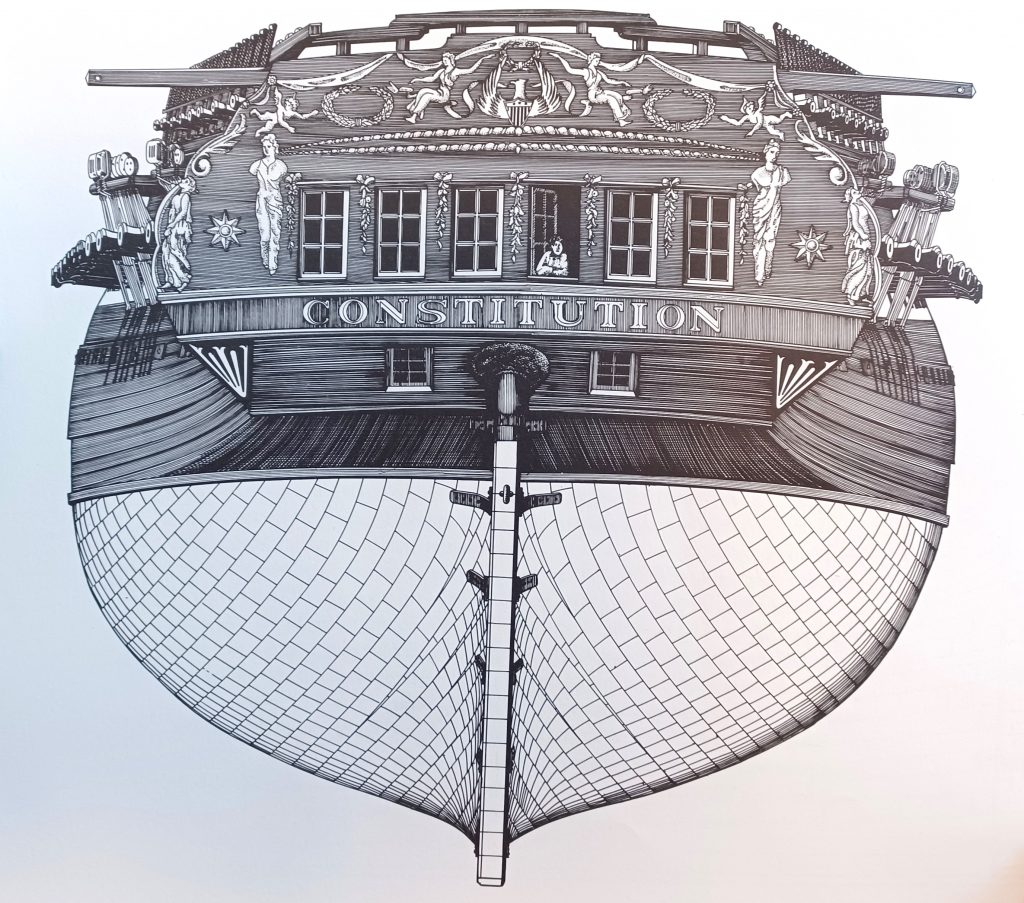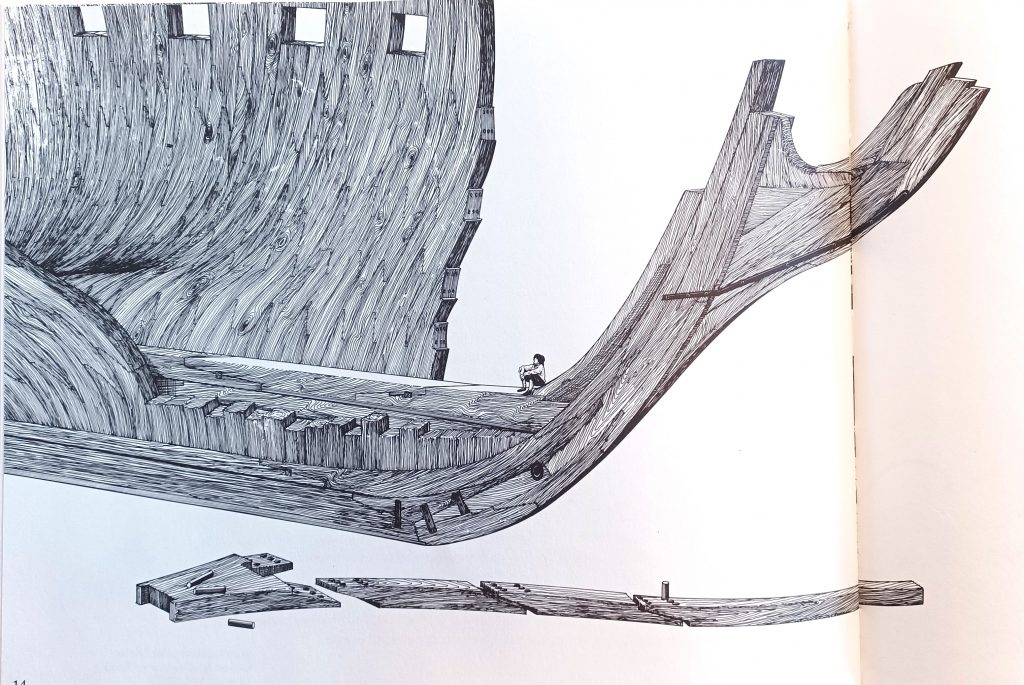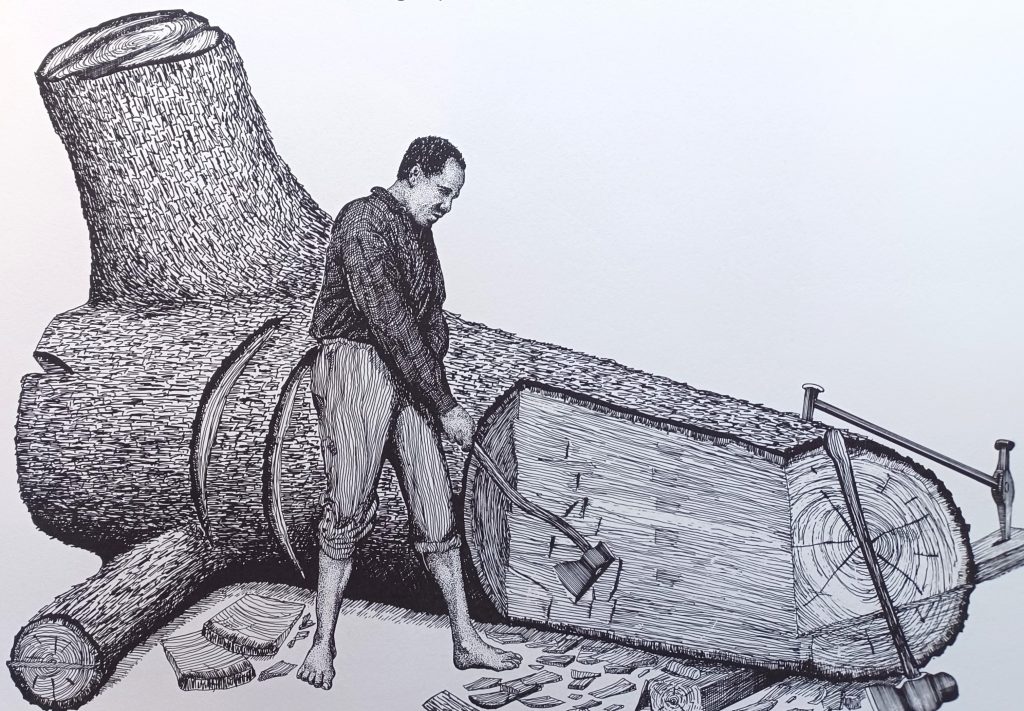“The story is told that one British sailor cried out in desperation, ‘Look, her sides are made of iron.’”
Her sides were not made of iron. However, “Once planked inside and out, Constitution’s hull would be a solid wall of wood almost 2 feet thick,” covered with copper sheeting. “She is a frigate and the largest ship ever built on these shores–1,576 tons . . . almost 200 feet (actually 175 feet) and its beam nearly 50 (45 feet, 2 inches).”

David Weitzman tells the story of the beginning of the United States Navy. During George Washington’s second term as president, “Congress set aside $688,888.52 . . . to build six American warships.” Many Americans didn’t believe the United States should have a standing military, but pirates were ravaging American merchant ships, taking American sailors captive, and demanding outrageous ransoms and tribute.
Weitzman tells the story of the building of Constitution from the perspective of John, a boy whose father is a ship’s carpenter. The boy observes, and helps with, the process from the first drawings, chalked on the floor in the attic of a large building, to its launching three years later.

The ship’s designer, Joshua Humphreys, began by building a model from which drawings would be made, and construction planned. We learn about the types of wood chosen for each part, how many trees were cut, and how the wood was worked. There were no power tools!

I found even the section on sail-making fascinating. “More than an acre of cloth. The American frigate, according to Humphreys’s plan, would carry more sail than any other ship of her type . . . the main topsail alone weighed more than half a ton.”
Besides how the ship was made, we also need to know about the cannons. “Thirty 24-pounders along with sixteen 18-pounders and fourteen 12-pounders – sixty guns in all!” Why not all the same size? Mr. Claghorne explains to John, “Shipbuilders must always make compromises.” Many factors had to be considered in making the decision.
Constitution’s hull was covered with copper sheeting to discourage the damaging accumulation of worms, barnacles, and mussels. The copper sheets had to be made in England, but Paul Revere and his metalsmiths made the nails, the bronze fittings, and the 242-pound ship’s bell.
Weitzman’s meticulous, detailed illustrations are the heart of the story. Before the completion and launch, we’re treated to this drawing that covers three pages.


“On October 21, 1797, John watched Constitution come alive as she slid down the ways and into the water with a tremendous splash.”
David Weitzman was aboard ship when Constitution sailed again for its bicentennial celebration. He described the stirring experience during our interview with him for Plumfield Moms.
This book is available at Amazon.
Purple House Press has reprinted Weitzman’s fascinating book, Pharaoh’s Boat. Sara’s review is here. Keep an eye on Purple House Press for more titles coming soon! And check out Biblioguides for more about David Weitzman and this book.
And, listen to our interviews with David here.